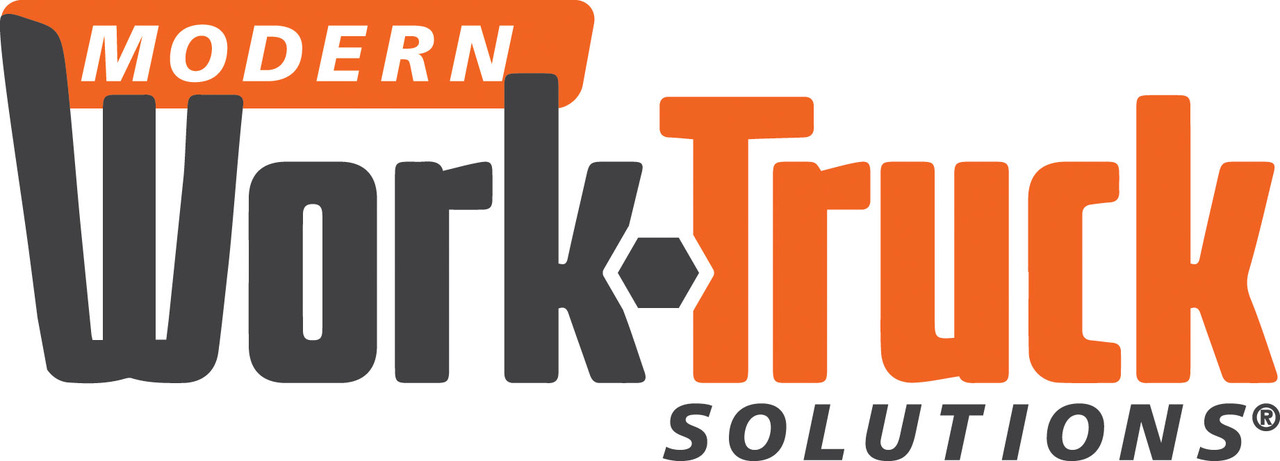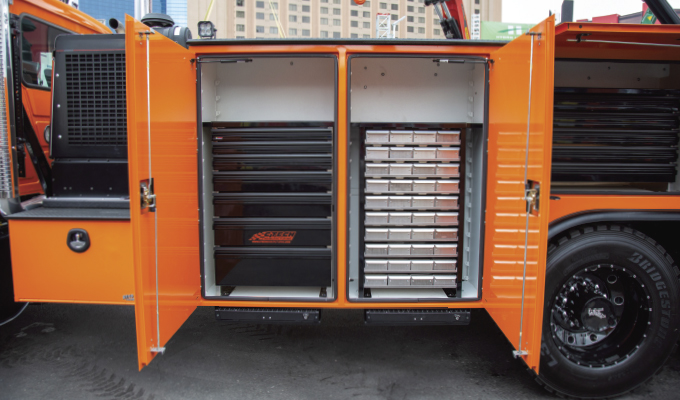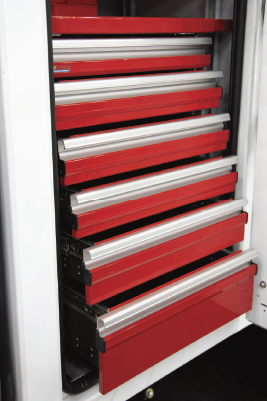In today’s fast-paced industries, service trucks and vans are more than just transportation, they are mobile command centers, service hubs, and critical workspaces. As demand grows for more efficient, organized, and secure storage solutions, manufacturers and fleet managers are rethinking how tools and equipment are stored and accessed within these vehicles. The evolution of storage solutions for service trucks and vans is driven by several key factors: ergonomics, safety, weight savings, and adaptability.
THE SHIFT TOWARD ERGONOMIC STORAGE
One of the biggest challenges in service vehicle design has been reducing strain and improving ease of access to tools. Traditional shelving and storage compartments often force technicians into awkward positions, increasing fatigue and the risk of injury. New ergonomic advancements in storage design prioritize quick, one-handed access to essential tools and equipment, reducing unnecessary movement and strain on workers.
Innovative drawer solutions, like those featuring MotionLatch technology, enhance efficiency by allowing operators to access gear without fumbling with complicated locks or handles. These small yet impactful innovations help maintain focus on the task at hand while improving overall job site safety.
SAFETY AS A DRIVING FACTOR
Safety considerations are at the forefront of modern service vehicle design, and storage solutions play a critical role in minimizing hazards. Loose tools and unsecured equipment pose a significant risk in transit, potentially causing injury or damage. Secure, purpose-built drawer systems prevent movement during transport, ensuring that tools remain in place no matter what the terrain.
For service trucks specifically, dedicated tool drawer units and bolt bins are vital for maintaining order. These solutions secure small parts and specialized tools, preventing them from shifting during travel while improving accessibility for technicians in the field.
Beyond internal organization, visibility and accessibility are key to safety. Strategically placed LED lighting within storage compartments helps technicians locate tools in low-light conditions, while high-visibility labeling ensures every tool has its place. Additionally, corrosion-proof materials contribute to long-term durability and worker protection.

LIGHTWEIGHT MATERIALS AND FUEL EFFICIENCY
With the increasing push toward sustainability and fuel efficiency, storage solutions must contribute to overall vehicle weight reduction. Traditional steel shelving and cabinetry add significant weight, impacting fuel economy and increasing wear and tear on vehicles.
The use of lightweight aluminum storage solutions, like those engineered for mobile applications, has gained traction due to its strength-to-weight ratio, durability, and resistance to corrosion. Service fleets that implement aluminum-based storage systems can benefit from reduced fuel costs and increased payload capacity, ultimately optimizing the vehicle’s performance and lifespan.
CUSTOMIZATION FOR MAXIMUM EFFICIENCY
Customization has become essential in modern service vehicle storage. Service vans often rely on tailored storage layouts featuring dedicated workbenches, overhead storage, and enclosed closet cabinets to maximize workspace efficiency and improve workflow. Adjustable shelving remains a standout feature, offering flexibility to organize equipment effectively. By combining fixed custom layouts with versatile shelving options, service vehicles can achieve optimal organization without compromising durability or functionality.
Meanwhile, service trucks typically prioritize purpose-built tool drawer units and bolt bin systems, ensuring technicians have secure, organized access to tools and hardware essential for their trade.
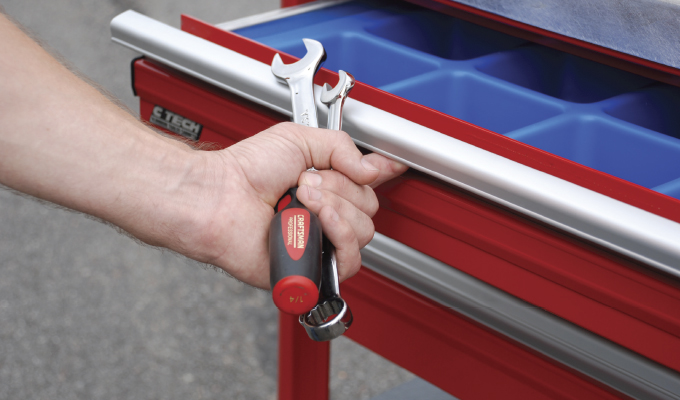
COST SAVINGS AND FLEET MANAGEMENT
For fleet managers, choosing innovative storage solutions is key to balancing operational efficiency with long-term cost savings. Well-organized storage systems not only boost productivity but also contribute to a more cost-effective operation. By preventing lost tools, reducing downtime, and extending vehicle life, service vehicles with optimized storage systems offer a clear return on investment.
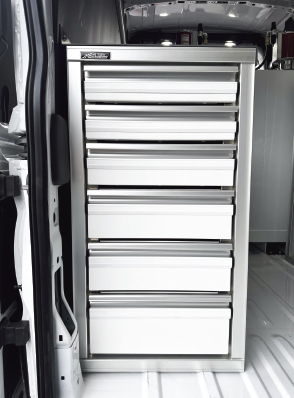
Properly designed storage solutions minimize wear and tear on both tools and vehicles. Secure drawers and bolt bins keep items in place, reducing the likelihood of damage and the need for frequent repairs. Additionally, lightweight materials like aluminum reduce vehicle weight, improve fuel efficiency, and lower maintenance costs.
Moreover, when technicians can easily access their tools, they work more efficiently. This leads to quicker task completion and fewer delays, ultimately reducing operational costs. The savings from reduced downtime, fewer repairs, and better fuel efficiency outweigh the initial investment, ensuring the storage system pays for itself over time.
THE FUTURE OF SERVICE VEHICLE STORAGE
Innovation is shaping the future of service truck and van storage, with advancements focused on improving efficiency, safety, and organization. As job site demands evolve, so must the storage solutions that support technicians in the field. Forward-thinking designs are emphasizing smarter use of space, better visibility, and easier access to tools and equipment. By integrating these innovations, service vehicles are becoming more versatile, helping technicians stay productive and prepared for whatever the job requires.
about the author
Kirstin Christophersen is a multimedia marketing specialist at CTech Manufacturing, specializing in innovative storage solutions for service trucks, vans, and mobile workspaces. To learn more, visit www.ctechmanufacturing.com.
